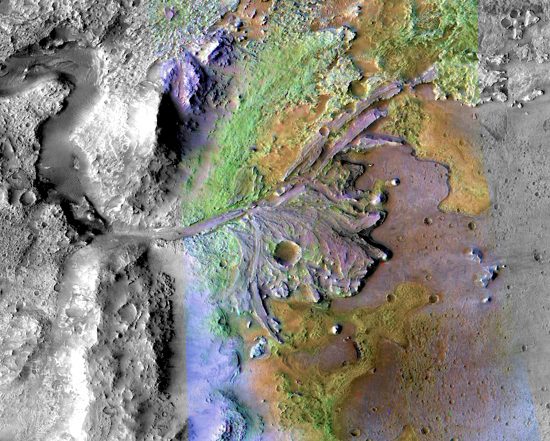
July 31, 2020
A helicopter on Mars.
NASA launched the Perseverance rover on July 30, 2020. Its primary mission is to search for signs of microbial life on Mars—the goal of every lander sent to the Red Planet. This time, the lander will include a small helicopter.
Perseverance will travel through the landscape, searching for life, or evidence for previous life. The space program has been working on that project since the early 1970s when Viking 1 was launched from Cape Canaveral on August 20, 1975, followed one month later by Viking 2. On July 20, 1976 Viking 1 landed on Mars, preceding its twin by almost exactly six weeks.
The essential reason for the Viking landers was to look for the same things that Perseverance is designed to look for. Viking 1 landed in the western portion of Chryse Planitia, while Viking 2 landed 6700 kilometers away in Utopia Planitia. Both landers analyzed soil samples in an attempt to locate respiratory byproducts, but nothing conclusive was found.
Perseverance has a drill to collect core samples of Martian rock and soil, then hold them for a possible pickup in the future. The rover also holds a “technology demonstration”, the Mars Helicopter, Ingenuity. It is not yet known if it will fly in an atmosphere that is less than 1% the density on Earth.
The air is 100 times thinner on Mars and averages 75 degrees colder than Earth. The environment appears to be bone dry, with only some suggestive experiments by the Phoenix lander to indicate the possible presence of water ice. Without the presence of water in the form of subsurface ice deposits, the chances of finding life are admitted by all to be slim.
On Mars, deep channels and other structures, such as those seen in Jezero crater, are thought to be caused by water flowing on the surface, although it was “millions of years ago.” Chemicals that form in the presence of water on Earth are presumed to have formed on Mars by the same process. Despite the contradictory evidence of mineral deposits that would be destroyed by water, such as olivine, the flowing water hypothesis continues to guide theories of Martian areography.
In 1997, the Mars Global Surveyor (MGS) found outcrops of layered rock extending for thousands of kilometers. Hundreds more images uncovered rock layering in other locations. Since many of the layers are similar in thickness, NASA scientists conclude that the strata are sedimentary. They might have built-up in water and then been eroded by wind. For that reason, the Perseverance landing site is extensively layered.
The active electrical forces that almost destroyed Mars at some time in the recent past are, of course, ignored by consensus science. Until electromagnetic forcefields, plasma discharges, and double layers are studied and understood by planetary scientists, no theory about Mars will be satisfactory.
Mars tells a story that includes powerful plasma discharges on a massive scale. Vast areas show signs of excavation down to six kilometers below the mean elevation. Some of the shattered rock was accelerated electrically into space; some fell back to the surface, where it was electrically sorted and deposited in hardened layers. Rather than water, it was probably lightning that scarred Mars.
Stephen Smith
The Thunderbolts Picture of the Day is generously supported by the Mainwaring Archive Foundation.












